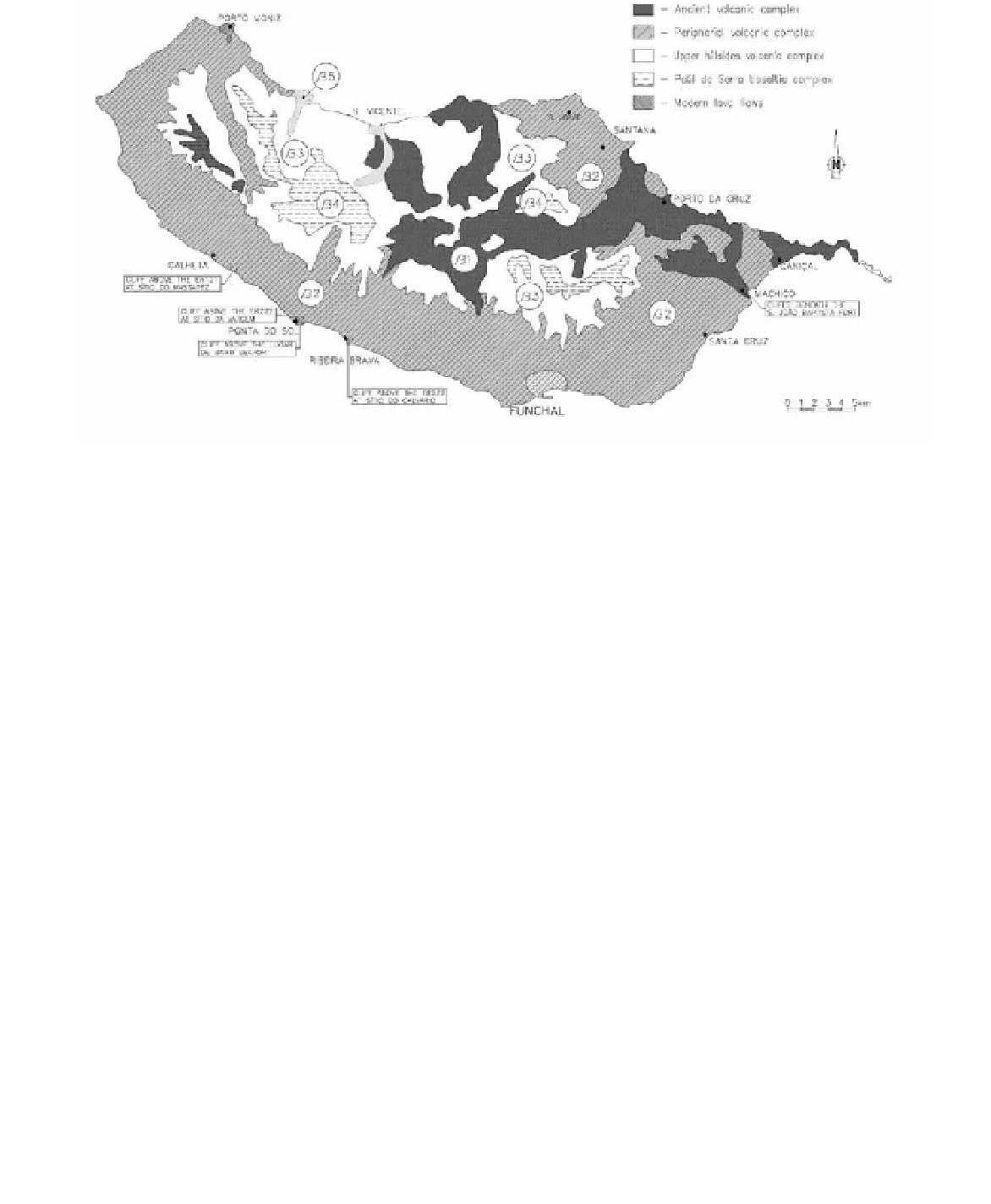Environmental Engineering Reference
In-Depth Information
Figure 1.
Geological map of Madeira island.
spacing from a few centimetres to a metre, that
lead to the formation of polygonal columns.
in addition to this joint set, there is also a
sub-horizontal one due, either to successive flows
deposition, or to cooling conditions, or to superfi-
cial decompression. The combined action of both
joint sets leads to block individualization.
The breccia (Br) and tuff (T) layers are less resist-
ant to the atmospheric agents than the basalts, reason
why they are generally significantly eroded. These
formations may be found predominantly compact
(Brc and T) or disaggregated (BrD and TD).
bedrock through the fractures in the basalts and
through the breccias and sandy tuffs layers origi-
nating the formation of unconfined water levels
delimited at the base by silty or clay tuff layers. The
consequent gradual softening of these formations
origins surfaces with lower mechanical resistance.
Rock mass failure processes are, thereby, more fre-
quent during stronger rainfall periods. superficial
weathering deposits (Dc) occur on the top and
on the terrace levels of the cliffs. slope deposits
or talus piles (DV) are due to the accumulation
of rock and soil that falls from the cliffs' surface,
at its base. Both these deposits reach, many times,
significant thickness and are found in precarious
stability conditions.
3
cliFF GeoMoRPholoGical
eVolUTion anD insTaBiliTY
caUses
4
sTaBiliZaTion solUTions aDoPTeD
The geomorphological evolution of the cliffs
essentially depends on their stratigraphic succes-
sion, namely the sequence of very resistant, though
often fractured rock layers, intercalated with fri-
able layers.
in the volcanic complex, the cliffs' morphologi-
cal evolution is due to the erosion of the breccia
and tuff layers, gradually leaving the overlying
basalt layers overhanging originating, on occa-
sions, undercut cliffs up to 2 m wide.
This evolutionary process, allied to the fractures
that affect the rocky layers, leads to the collapse,
either of individualized blocks, or of rocky and
terrigenous masses of significant volume.
This decompression process is often aggra-
vated by superficial water flow that infiltrates the
considering that the definition of most appropri-
ate solutions for cliff stabilization depends strongly,
both on the occurring geological and geotechnical
conditions and on the acquired experience, either
on design and on monitoring similar works, it is
critical to have a plain understanding of the evolu-
tionary processes that affect the cliffs.
however, there are generally many obstacles
to a full characterization of the cliffs, due, on one
hand, to the lack of topographical data that accu-
rately represents their geometry, and, on the other
hand, to the impossibility of performing detailed
geological surveys.
Table 2 summarises the adopted stabilization
solutions used for the presented cliffs.













